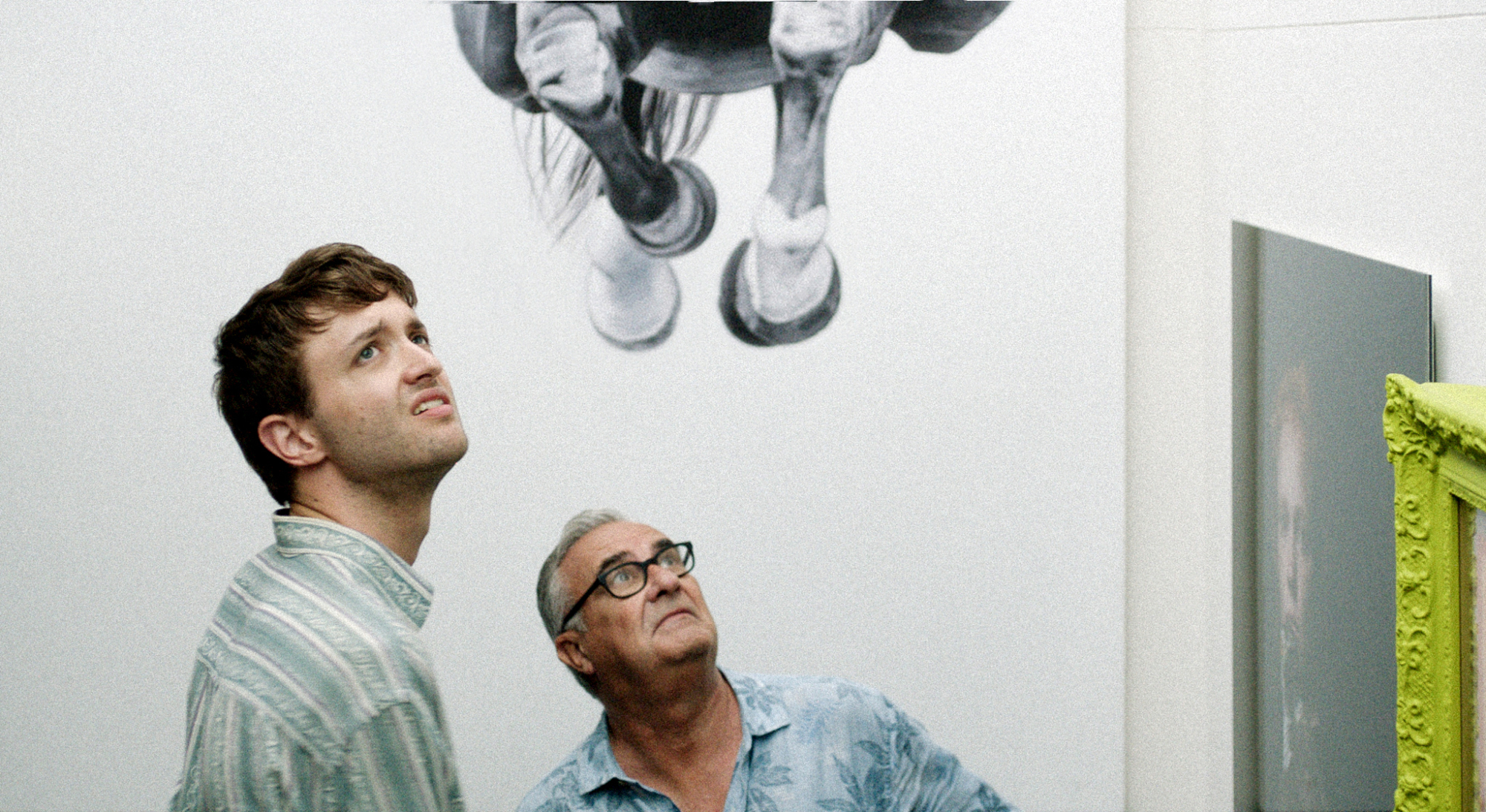Initially, Friends and Strangers (James Vaughan, 2021) has a deceptively meandering narrative typical of the mumblecore genre: it traces the desultory interactions of a few young, middle-class white people whose inability to identify, articulate or advance their desires promises to strand them in a state of helpless alienation from a postmodern society too complex, corrupt and distracting to navigate. As it progresses, however, the latent structure and style of this ambitious debut film become manifest – and, by the end, the film’s formal design has become so oppressive that viewers may feel almost as trapped within it as its hapless antihero, Ray (Fergus Wilson), is in contemporary Australian society.
The film starts with quaint illustrations of the colonial settlement of Australia by the British – images of the fleets of ships arriving, the new penal colony inhabitants disembarking, their studies of the native flora and fauna – which suggest a lightly satirical approach to the absurd plight of the contemporary middle-class Australian inheriting such a sanitised legacy. The film proper starts with a sunny image of seaside Australians arranged in loose imitation of A Sunday Afternoon on the Island of La Grande Jatte, George Seurat’s famous pointillist painting of Parisian bourgeois frozen in stately holiday mode. Ray wanders into the composition and out again, spoiling the effect. It’s an action he’ll repeat towards the end of the film, as he attempts to escape a social scenario so darkly entangling that the film has taken on some of the menace of a horror film. And real-life horror is acknowledged when the film ends on another reference to the bleak history of Australia, except now without the quaint illustrations: a sombre title card that looks like a written malediction, in red letters on black, reading, ‘Filmed on the lands of the Eora and Ngunnawal peoples’.
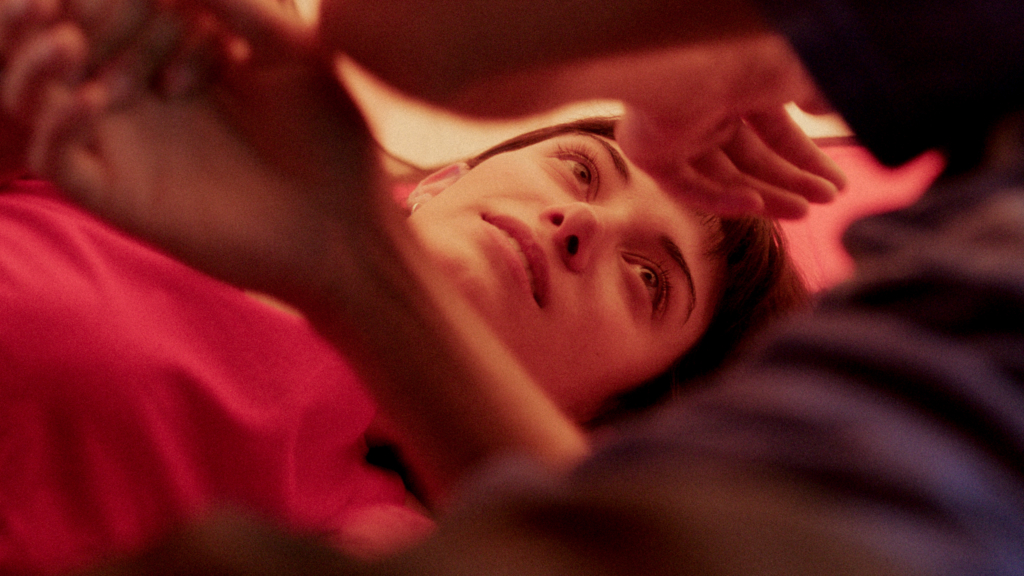
This bracketing of the narrative, together with the film’s preoccupation with framed paintings, borders and limitations, continually underscores the young characters’ entrapment in a nightmarish cultural legacy, in which they enjoy the wealth of stolen land but don’t really know what to do with it. All of their haphazard, apparently free-ranging motion – walking aimlessly, driving around, hiking, camping out, going from house to house – does nothing to liberate them. Ultimately, although it seems impossible for them to form bonds with individual people that allow for satisfying relationships, the social and cultural bonds holding them in place are far too tight.
Attempts to escape from this dynamic manifest in characters’ repeated movements from cityscapes to the water, as if by getting out of the cement maze of the city and moving to the edge of the land – or even by getting off the land itself and into the ocean – there could be some way out of the snare of disheartening social interactions connecting them to Australia’s grotesque cultural and historical context. Near the end of the film, Ray does indeed get to experience fleeting peace and solitude immersed in the bay, floating contentedly off shore – but even that moment of respite turns out to have only been a dream.
We first discover Ray and Alice (Emma Diaz) on the streets of Sydney, exploring a possible romantic connection. Their figures seem isolated among the immense buildings and strangely deserted streets. They’re shot in tight, entrapping interstices in urban cement structures. The few other people they see are far away and impossible to hear, their activities hard to fathom. Below the freeway overpass they stand on, they see a mechanic working under a car and another young man nearby tapping his leg repeatedly; when Alice refers to one of them, Ray has to ask her, ‘Which one: the headless guy, or the thigh tapper?’

Ray professes to like the way cities function like a ‘hive’ of insects; but, then, as a glum, earnest young man who never seems to be enjoying anything, he says so many things for effect, or just to cover uncomfortable silences. He asserts that words are untrustworthy – and, certainly, words don’t seem to serve him and Alice well, their conversational interactions forming a discordant modernist symphony of missed cues and false notes.
Ray asserts that words are untrustworthy – and, certainly, words don’t seem to serve him and Alice well, their conversational interactions forming a discordant modernist symphony of missed cues and false notes.
But if the sterile, confining city isn’t the right place to make a new connection, there’s always the country. Ray and Alice go camping by a lake, where there’s a more spacious illusion of freedom. However, things don’t go any better between them. Their own inability to communicate with each other about what they might or might not want to do (Hike? Get information at the park office? Take a nap? Have sex?) extends out into their confounding interactions with others.
For example, a dotty, garrulous old man named Wes (Steve Maxwell) pulls up in a ute, and cautions them that they might not be allowed to camp on that particular lawn, because he’s tried before and been asked to move. But Ray says he’s already talked to someone at the park office, and they decide to stay, though Wes keeps cautioning them obsessively. In a later exchange, he encourages them to go hiking and look at the ‘Aborigine doodles’ on the rocks, a typically clueless reference to the Indigenous cultures suppressed and pushed to the extreme margins of Australia’s white settler society and its generations of descendants.
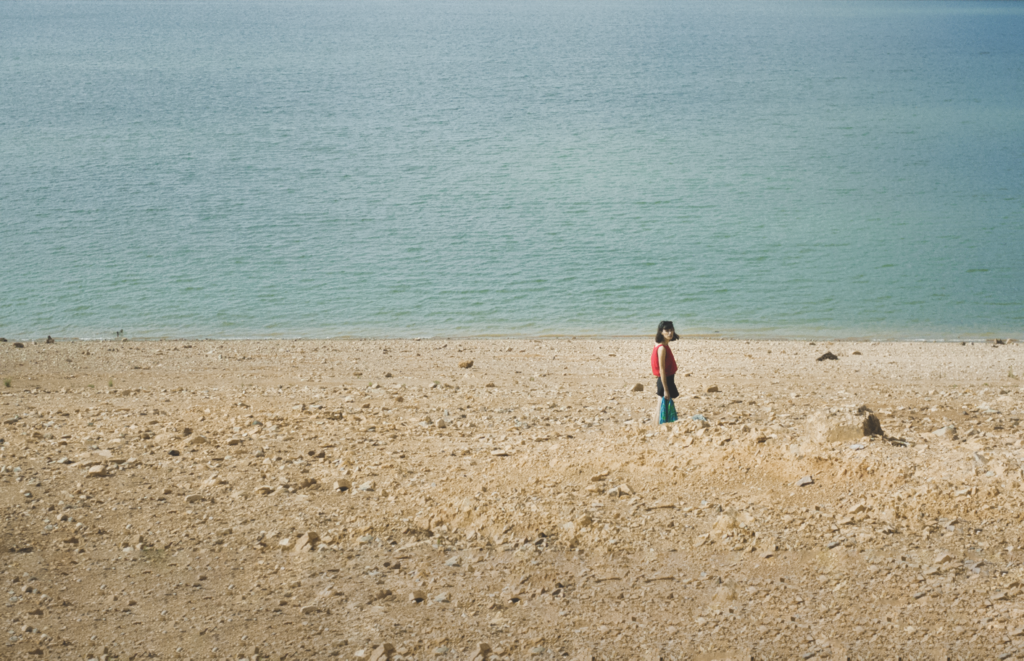
When they next meet Wes, his voice interrupts them as they’re having an increasingly heated argument in their tent about their expectations for the trip and the relationship. He’s calling them from strangely far away, in order to say he’d told them they’d be asked to move. Indeed, they have moved, though Ray and Alice can’t agree on whether it was for that reason or because the view from the second camp site was better.
Every encounter or exchange seems to plunge the characters into a web of miscommunications, each one seeming small and unimportant but together adding up to such a sticky, entangling mess that the desire to get away is the only sane reaction. The one exception seems to be Alice’s beach encounter with a child named Lauren (Poppy Jones), whose direct manner of expressing her interest in other people allows Alice to talk openly for the first time.
The possibility of making direct connections seems greater still when Alice and Ray get together with Lauren and her father (Ion Pearce). He sadly describes how much more intellectually and creatively satisfying life used to be in the old bohemian days in Sydney in the 1950s, when ‘the doors were always open; you could walk in and meet people, complete strangers, and have conversations about art, music, philosophy’. It may be specious nostalgia on his part, but at least some of what he says seems borne out in the generous way Lauren gives Alice some of her late mother’s sartorial creations, which are now vintage but still lovely. But even at the conclusion of this seemingly affirmative human interaction, Lauren looks saddened and withdrawn, just as she did when she first told Alice that, in touring the country with her father, she’s arrived at a melancholy conclusion: ‘It’s all the same: weeds, trash, words, rabbit shit.’
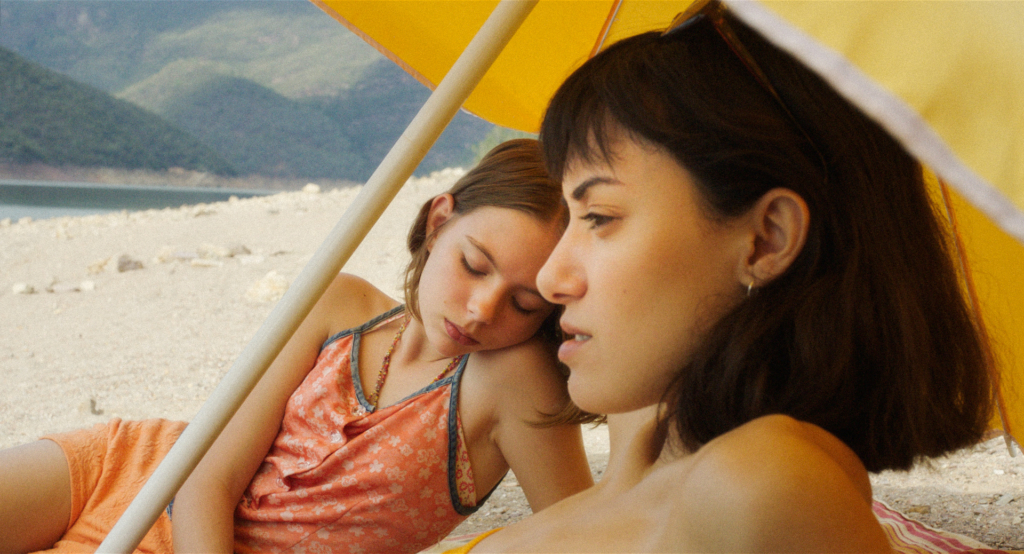
At the start of the second act, back in Sydney, the tone is still relatively light, and the emphasis remains on missed connections. We find Alice in a generic cafe, making an abortive attempt to tell a blonde friend about the camping-trip fiasco – only her friend has to leave abruptly. We gather Alice’s account in an unreliable, piecemeal way later on when the blonde friend is at the hairdresser’s and Ray happens by. There is an awkward conversation between Ray and the friend – they know each other, but we don’t know how – and when he leaves, she tells the hairdresser what Alice ultimately told her, ending with a scornful judgement of Ray as ‘one of those sincere guys’.
Meanwhile, Ray finds himself embroiled in a frustrating journey to meet a client for a wedding video he’s looking to shoot, a connection of his friend and videography partner Miles (David Gannon). Stuck in Ray’s small car, they’re driving around in circular patterns in congested traffic, engaged in yet another distrait conversation as Miles tries to get Ray to talk about his recent break-up and Ray refuses, not wanting to ‘dwell’. Miles’ reply foreshadows the film’s darkening inclination: ‘If you don’t deal with fucked-up things properly, that’s when things become haunted […] You watch horror films – they never end up good.’
This scene is shot from the cramped back seat at an odd angle that mainly shows us the backs of their necks as they talk at cross-purposes or withdraw into moody silences. Then steam begins to rise from the bonnet, and Ray’s mother, Carol (Jacki Rochester), reluctantly comes to the rescue. She has harsh words for Ray’s failure to ‘grow up’ – presumably meaning his unwillingness to get any kind of propulsive start in life – and threatens, ‘I’m tempted just to leave you here.’
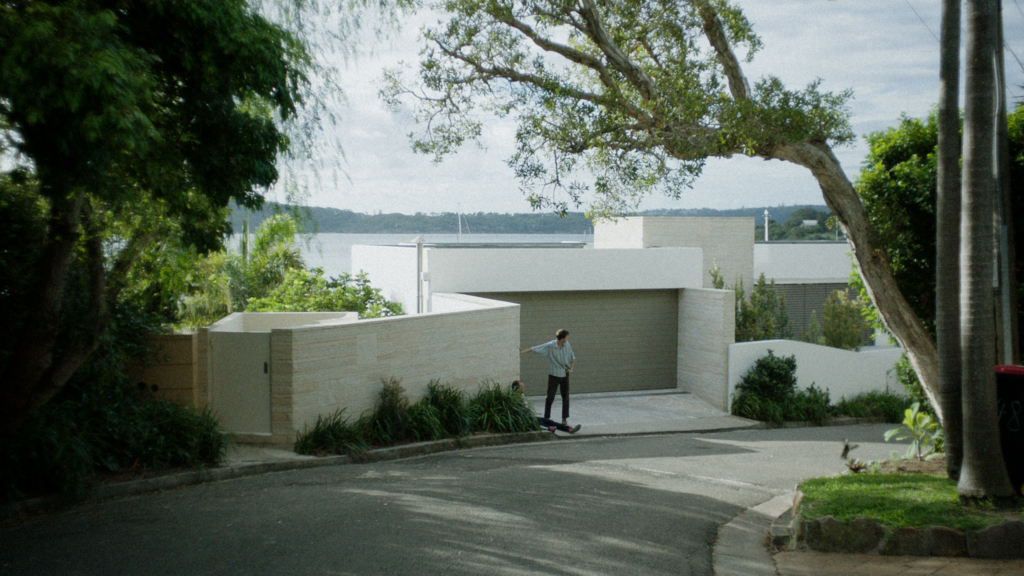
She does so, in effect, dropping them off at the wrong place in a posh seaside neighbourhood of modernist, look-alike houses. There, Miles falls mysteriously ill, to the point of lying down on the sidewalk. The head of a man pops up over a nearby wall to offer them assistance, only one of many head-from-body separations throughout the film. Their host, who claims only to be a guest in the house, seems to be the kind of bohemian described by Lauren’s father. He’s eccentric but welcoming, pressing drinks on them, eager to introduce them to the bizarre music he’s playing loudly, and warning them in a friendly way about the neighbourhood: ‘Everybody on this street’s in finance – usury, in the old parlance […] people with a lot to hide, let me tell ya.’
As Miles seems to sink into merciful unconsciousness, Ray goes next door to find David (Greg Zimbulis), his prospective client – a blocky, arrogant, rich middle-aged man whose bizarre aggressivity sets the terms for everything that follows. This third act, dominated by David, begins with a sharp acceleration of incomprehensible remarks and behaviours. Ray is berated for being late (‘You have fucked us around a bit!’) while simultaneously being pulled into the multiple rooms and levels of the odd house as if he were being invited for an indefinite stay. He keeps trying to follow David’s ever-shifting agenda. First, it’s a crisis that Miles is in the other house (‘Miles is in there? […] We have to get him out!’). Then they’re distracted by David’s daughter Louise (Amelia Conway), the angry bride-to-be, who insists they only have five minutes to meet about the wedding video before she has to depart. She takes a call instead, and never leaves.
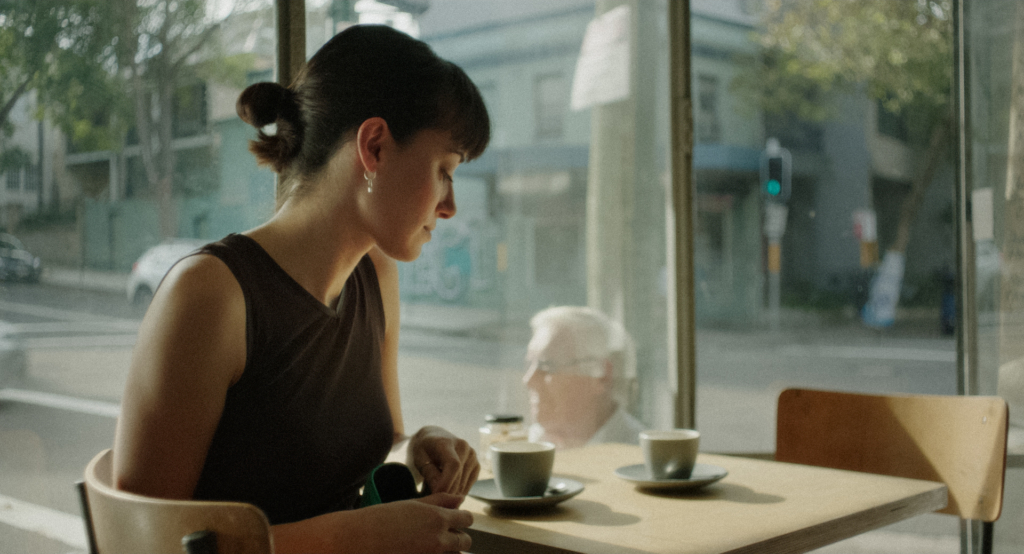
Then David starts in on Ray’s job as a videographer, because his younger daughter Sam (Jayden Muir) is interested in film school. Sam shouts a non sequitur from her upstairs bedroom window: ‘What is that?’ She’s referring to the neighbour’s strange music, which blares ever more loudly throughout the sequence, occasionally mixed in with bird and animal cries. In trying to assess how viable a profession videography is, David and Ray get balled up in a series of possible words to describe the money Ray is making, defining and debating ‘remunerative’, ‘lucrative’, ‘piddling’ and ‘consequential’. ‘But where is it leading?’ demands David. ‘All over. Anywhere you want, really; that’s sort of the beauty of it,’ says Ray wildly, cracking under the pressure of interrogation.
A huge portrait of Queen Elizabeth II, stooped forward to leer out horribly at the viewer, is a clear indication that everything pertaining to the house is meant to characterise Australian society in grimly metaphorical terms.
A forced tour of the outlandish house, along with several beers David urges upon him, breaks Ray down swiftly. There are large paintings covering the walls, almost all disturbing. A huge portrait of Queen Elizabeth II, stooped forward to leer out horribly at the viewer, is a clear indication that everything pertaining to the house is meant to characterise Australian society in grimly metaphorical terms. At one point, David brags that the walls are so thin that it’s a mystery how they’re able to support the weight of the paintings: ‘There’s a whole art in itself to making something essentially weak and hollow appear to the eye strong and unbreakable. We’ve mastered it here.’
Ray, increasingly addled by the whole experience that’s tending towards the darkly fantastical, is shaken by the impression that the Queen’s all-matching outfit started out blue and changed to pink. Has he actually been drugged, or is he in some kind of waking nightmare? David begins to reassure him in the sinister manner of a serial killer: ‘Just relax. Nothing horrific. Nothing hidden or dark or weird. Nice cold beer. Just enjoy a beer. Relax. You can look at the ground if you need to. Nice relaxing beer.’

The house tour ends in the creepy, low-ceilinged basement, which David speculates might have once been servants’ quarters. Small, crudely daubed paintings are on the walls. David informs Ray that he’s put ‘all the freaky ones in here – the ones we can’t hang upstairs’, and proceeds to excoriate professional artists and their ‘sick’ psychologies, though these paintings look like amateur work created in the house (there’s a close-up on a childishly drawn one featuring a masked man wielding an axe).
Here, David urges Ray once again to test the wall’s strength. Ray is mocked when he taps too lightly, so he keeps tapping harder at David’s insistence until, inevitably, he puts his fist through it, and is subsequently heaped with blame, accused of wild drunken recklessness: ‘Mate, just way too fucking aggressive […] He just punched straight through my fucking wall!’
When next we see Ray, he’s down by the ocean blundering through the Sunday Afternoon composition again. He sees Alice and, trying to avoid her, hurries to join a group touring the park. An American woman in the crowd asks the tour guide, ‘What about the Aborigines? Are they around here, or what?’
The question is never answered, as another distracting social connection emerges – Alice and the tour guide, who are apparently long-lost friends, suddenly rush to greet one another. Ray takes the opportunity to flee, heading down to the ocean across jagged rocks that frame him within hard surfaces, mirroring those seen in the first city sequence with Alice.
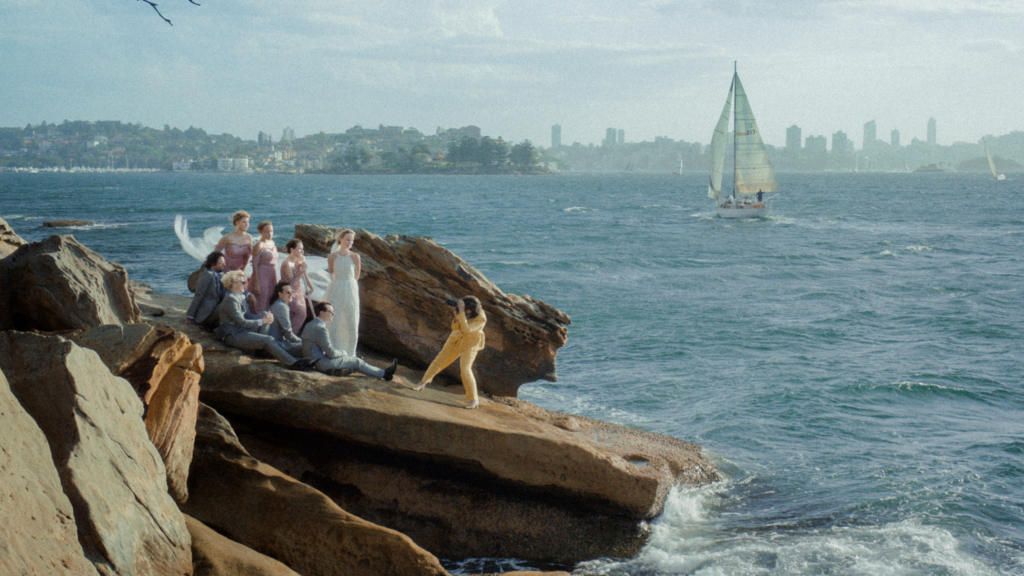
Later, when Ray wakes up from his watery dream of freedom to find himself on seemingly cursed Australian land again, he comes to consciousness already enmeshed in the maddening snare of interpersonal connections, with his mother and David standing over him, talking about how they know each other, having gone to school together. Ray is informed he was found when Sam saw him and told her father, who told Miles, who in turn contacted Carol through the next-door neighbour. ‘What a saga!’ Carol exclaims – and, indeed, there has been a great deal of travel and activity for Ray, a trapped young person who’s going nowhere.
It’s rare to find a film that thematises its own sneakily emerging structure. It’s also a big risk on the director’s part. Friends and Strangers could easily be dismissed as just another stem-winding mumblecore film headed no place in particular. In fact, a second viewing reveals its strengths further – with even the film’s seemingly bland, forgettable title taking on a wealth of critical and absurdist connotations.
